Before we can recycle many plastics, they must be sorted into separate streams. Angeli Mehta finds out how
How do we stop plastics becoming waste? In the UK, recycling has flatlined in recent years, but rates are expected to ramp up with new government measures to make producers of packaging responsible for anything they put on the market, together with a tax on plastic packaging with less than 30% recycled content and a deposit return scheme for single-use drinks bottles and cups. Across the EU, the aim is that by 2030 all plastic packaging should be able to be economically recycled or re-used. On top of those new targets, China’s ban on taking our waste means our sorting and recycling needs to be done at home.
Globally 360 million tonnes of plastic were produced in 2018. The EU produced 62 million tonnes, but just 9.4m tonnes were collected for recycling in its member states.
Recycled plastic should be a strategically valuable commodity, especially in Europe where oil has to be imported. Indeed, demand for recycled PET – especially the high viscosity polymer used for drinks bottles – exceeds production. Moreover recycling has a part to play in cutting carbon emissions. According to waste, water and energy management group Veolia, every tonne of recycled plastic avoids the emission of more than double that amount of carbon dioxide.
But to be recycled, plastics have to be sorted. It may not be the most glamorous aspect of the supply chain, but its role is crucial. Sorting to a high degree of purity means polymers can be re-used and retain their value.
Environment consultancy Eunomia argues separate plastics collection schemes will help improve sorting output, and it has called for standards to be set for high-quality sorting across Europe to maximise recycling volumes. A 2017 survey of over 400 plastics converters revealed that quality and reliability of supply is a key barrier to using recycled polymers.
Sorting to a high purity means polymers can be re-used and retain their value
Less variety might help. Packaging design makes the sorting task complex: black plastic, plastic sleeves on PET bottles, and products with multiple layers all mean valuable materials are thrown away. Not only are multi-layers difficult and expensive (or even impossible) to separate, they often contain polyamides or ethylene vinyl alcohol, which can change the colour, for example, of PET recyclate and its chemical, physical and mechanical properties.
Variation in the colour of sorted polymer streams can be influenced by mundane factors such as time of year – for example, more plant pots might be recycled in summer. ‘The brand owners, driven by consumers, want to maintain their pearly white packaging, but we now need to make that change to murkier colours – greys, greens, browns. So there are some changes to be made in the whole value chain,’ suggests Gabriella Isidro, business development manager at Ineos Olefins and Polymers.
Plastic flows
Objects to be sorted whizz along conveyor belts in recycling facilities at a speed around three metres per second. Light plastics like polyethylene (PE) and polypropylene (PP) films are filtered off in an airstream, whilst heavier and rigid plastics continue in a 3D stream. But in both cases, near infrared (750–2500 nm) systems are used to sort the different polymer types. Near infrared relies on the different reflectivity of polymers and distinguishes between their individual wavelength signatures to separate them.
Further on in the system, optical detection systems allow colours to be separated. Veolia has developed hands-free sorting to correct any errors – with operators able to remove items by touching them on a screen. Depending on the application, the different plastics are usually washed – to get rid of impurities like glues and inks – and then ground into flakes, which might be further sorted by colour.
The big polymer producers are coming into the game, so there’s a good chance to realise chemical recycling
Using ‘physical parameters like near infrared will come to a natural limit,’ explains Harald Lehmann, vice-president of plastic materials and processes at Tomra, a global manufacturer of collection and sorting systems. ‘We need to cut down the time, and we have to generate information for sorting – for example, from within the packaging.’
That’s partly because recycling volumes will have to increase dramatically to achieve national targets; and more data is needed about the packaging so more is known about its history if the purity of polymer streams is to increase. Stringent standards mean plastics intended for food contact have to be separated from the rest. But there’s another driver. ‘The big polymer producers are coming into the game, so there’s a good chance to realise chemical recycling. Then the loop will be closed,’ says Lehmann. The polymer producers ’will set new thinking on quality – which will push recyclers as well’, he adds.
‘It’s absolutely imperative that we get the purest versions out of the recycling plant,’ says Isidro. Colour, smell, food contamination and even exposure to sunlight all impact on whether a polymer can be recycled and what it can be used for. ‘Let’s say the application is detergent bottle – that might not be such a problem. But if you want to drink out of that application, it’s very different.’
Packaging reveals itself
Two routes are being explored to elicit all the information needed from an item of plastic. A UK consortium, Prism (Plastic Packaging Recycling using Intelligent Separation technologies for Materials) has developed fluorescent markers that provide a unique signal to sorting equipment. Any polymer, as well as multi-layer packaging, can be assigned a marker that can be locked into the printing ink on packaging labels. One of the main objectives of the Prism project was to recover food grade polymers – usually polypropylene (PP ) and high density polyethylene (HDPE), as used for milk containers. But the chemical markers also enable identification of black plastics (invisible to NIR systems and therefore wasted) and provide the information on what’s under full-length shrink-wrapped sleeves. It’s used alongside NIR, with the fluorescent markers used to distinguish within polymer streams.

Edward Kosior, managing director of Nextek which led the Prism consortium and designs recycling facilities, says using the fluorescent markers produced a 96% purity for PET – meeting the EU’s standards for food contact. Standards are higher for food grade polypropylene or HDPE. A second pass through the detection systems can deliver 99.6% purity. The European Food Standards Authority mandates 99% purity to make sure there are no damaging chemical additives that could come into contact with food. ‘That makes the decontamination process more straightforward because anything previously used for food contact will have no strong absorbing oils or fragrances.’ The labels can still be read even if they’re crumpled, flattened or dirty. Once plastics are separated, the labels are carried off on a separate airstream.
Initially the project’s fluorescent markers were developed by selectively recovering rare earths from used fluorescent tubes and lamps: a new chemistry to extract and restructure them was developed with Imperial College London and Brunel University in the UK. Nextek has since identified another – more sustainable – source, but for now the technology is firmly under wraps.
Kosior describes the science and engineering as ‘straightforward’ but adds that ‘we need the brand owners to take the science and put it to work. In the past they’ve been focused on costs, but now they realise they need to be part of the solution.’ He says the group is pressing ahead with commercialisation, and further development is being done with UK waste processor Viridor. Nextek has worked with Viridor to design its state of the art facility due to open in Avonmouth in the UK this year. It will employ Nextek’s deodorising step, allowing plastics that had a limited afterlife to go into bottles for shampoo and household detergents, for example.
The new plant will have the capacity to sort 60,000 tonnes a year from a feedstock of 81,000 tonnes of plastic bottles, pots, tubs and trays. Viridor says it will ‘put more recycled PET, HDPE and PP back in the economy every year as a viable and sustainable alternative to virgin plastic’, and help companies such as Ineos meet their own sustainability targets.
While the Prism technology can detect black plastic, Nextek has come up with NIR detectable pigments to replace the carbon black usually used by manufacturers. Unilever has tested it in two brands and last year began to put bottles using the new pigment onto the market. It means another 2500 tonnes of its plastic bottles can now potentially be recycled each year.
Chemical markers aren’t the only option. A European project – called HolyGrail – addresses the concept of digital watermarks. The codes – stamped all over the surface of an item – are invisible to the naked eye but can be seen by cameras on the sorting line, and the information in the codes used to identify the packaging material. The codes can either be embossed into plastics or integrated into printed labels. A Dutch company, Filigrade, is working on one such watermark – it claims a 98% accuracy in testing and aims to go further. According to Filigrade chief executive Johan Kerver, there should never ‘be a wrong reading, but the codes might not always be read, perhaps if package is very soiled’. He is confident that ‘once a fraction is so pure it will become very valuable, and once the plastics become valuable then they won’t be thrown away, or end up in the ocean.’
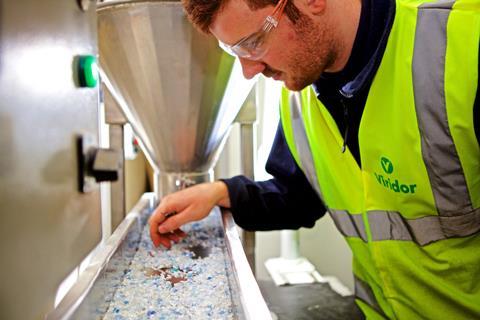
Filigrade won Nouryon’s (formerly Akzo Nobel speciality chemicals) 2017 Imagine Chemistry competition. Nouryon itself has been testing Filigrade’s technology as a potential measure to protect against counterfeiting. Aside from making sorting easier, the system could help consumers sort out which packaging is recyclable, by scanning it with their mobile phones.
Since HolyGrail finished last year, Filigrade has been working on making its codes smaller, so they’re less visible and need less computer power to be read. It will soon have its own sorting device ready to demonstrate the technology to potential customers, and it will have a presence in a new Dutch recycling test centre planned for May.
Kerver says adding the codes shouldn’t increase the costs of manufacture: Filigrade will be asking manufacturers to pay using a portion of the tax rebate they are set to receive in the Netherlands for bringing recyclable products onto the market.
Digitalisation and artificial intelligence also have a role to play. Tomra is employing deep learning – a branch of AI whereby the algorithm learns by looking at thousands of images of the objects to be sorted. Its first application was launched late last year, to separate polyethylene (PE)–silicon cartridges, as well as those used for two-component adhesives, that would otherwise compromise the quality of the desired PE stream. A European research project CIRC-Pack has been trialling a machine-learning approach to control the properties of mechanically recycled polymers and to help NIR based sensors to cope with new bio-based plastics it has also been developing.
Will the industry coalesce around one system? ‘There will always be interesting technology around – it’s in an evolutionary state. But we need to start trying them out, and sort the big problems,’ says Kosior. ‘And if a better technology comes along, everyone will change. But we have a huge task – and we can’t ignore the imperatives of tackling waste today. There’s no excuse for waiting.’
Eliminating waste
What will better sorting allow the polymer makers to do? Take polystyrene – commonly found in yoghurt pots and take-away food containers, but not widely sorted and recycled. Yet it is ‘infinitely recyclable’ according to Norbert Niessner, director of global R&D and intellectual property at Ineos Styrolution. Its work with Tomra shows the ‘molecular specifics can be extremely well detected by NIR, so the separation of polystyrene waste is truly possible.’
We’re only at the beginning of the learning curve
Tomra’s multi-stage sorting process of post-consumer waste, grinding the polystyrene into smaller flakes, washing, drying and flake sorting produced a flake purity of better than 99%. Polystyrene has unique properties that mean it’s ‘designed to be recycled’: it has a low ceiling temperature – at around 380–400°C there is dynamic equilibrium between the polymer and monomer, ‘so it goes straight to the monomer – no other mass polymer shows this feature’, says Niessner. ‘If you prevent post reactions of freshly cleaved molecules, [by] quenching them rapidly enough, then you can reach high yields.’
So far the project has achieved yields of 70–80%, ‘but we’re only at the beginning of the learning curve. Now we have shown we can re-polymerise it, we can really turn the circle, without compromising on quality.’ A joint venture with dairy products producer Müller has already produced yogurt pots made with 50% recycled polystyrene.
Ineos Styrolution wants to know how much tolerance the polymerisation process has for contamination by additives and other polymers. For example, it turns out to have some tolerance to the presence of brominated compounds (used in insulating materials in the construction industry), but the limits aren’t clear; it’s sensitive to contamination by PET, but can tolerate more than a 10% presence of polyolefins. Niessner says sources could be selected in a way that means subsequent recycling is possible.
Ineos is part of a consortium, Styrenics Circular Solutions, with chemical companies including Versalis, Total and Trinseo. One of the technologies it is evaluating is a microwave system developed by Canadian startup Pyrowave. The reactors are small enough that they can be located alongside sorting systems, so creating a distributed solution. Pyrowave’s system will be installed at one of ReVital Polymer’s plants in Canada. Keith Bechard, ReVital’s commercial director, says the challenge will be to produce the monomer to a consistently high purity at different sites, so those different sources can be integrated back into the manufacturing process.
ReVital’s main customers are suppliers of auto-parts, where colour and odour of plastics recyclate can be of less importance than in consumer packaging. All the recycling technology exists, says Bechard, the issue is collection and getting those materials to the recycler.
Lehmann suggests both mechanical and chemical recycling technologies will be required (see Plastic recycling heading for the mainstream), especially as there are a finite number of times that plastics can be mechanically recycled. But regardless of which technology is employed, what’s going into the reactor needs to be very clean. He notes that projects have failed at the pilot stage for want of high enough quality feedstock.
It’s clear the technology for better sorting is already with us today, even if one size doesn’t fit all. Each one of the different players in the plastics value chain will have to work together to make packaging that can be sorted and so returned to a circular economy. But the industry also needs volume – and that’s something we can all influence.
Angeli Mehta is a science writer based in Edinburgh, UK
The plastics problem

How chemistry is providing solutions to the issue of plastic waste
- 1
- 2
 Currently
reading
Currently
reading
The plastic sorting challenge
- 4
- 5
- 6
- 7







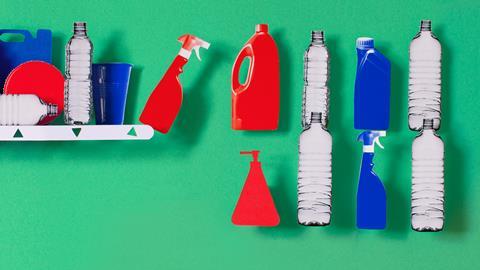







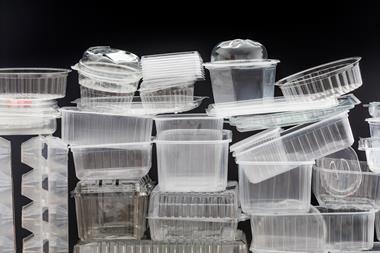

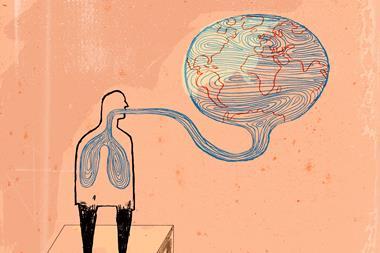
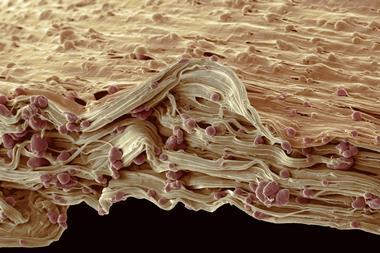







No comments yet